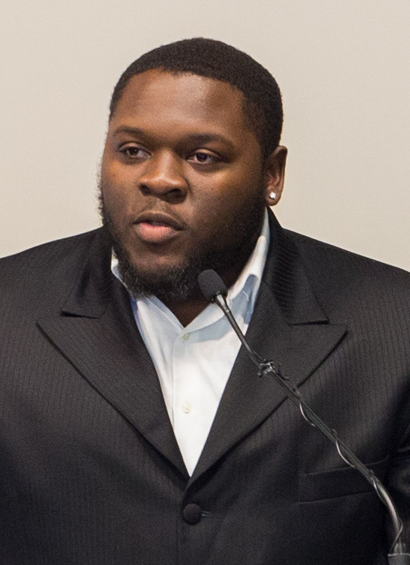
During the opening of his 2019 Fall Convocation address on Sept. 18, President Thomas A. Parham described California State University, Dominguez Hills (CSUDH) as “ripe for growth, change, and transformation,” and he offered ways to make the most of it to enrich students’ lives.
“We are at a unique and especially rare point in time for this university,” he said. “All of the factors are aligning in our universe to support our vision of possibility and potential. We just need to step outside of our daily grind to see what I believe is right before our eyes.”
The president set the stage for his remarks with an update of the current major construction projects in progress on campus. This includes the $6 million Classroom Village that was built over the summer and features seven new classrooms and 100 computer stations to help support the university’s largest cohort of new students in its history – 6,251 undergraduates.

“We are building new buildings, which are changing the aesthetic ambiance of the campus, and hiring new faculty and nurturing the more seasoned veterans who are all committed to student success,” he said.
Parham went into greater detail regarding CSUDH’s deferred maintenance and renovation projects, such as adding a third chiller in the Central Plant, installing rigging in the University Theatre, and long-standing renovations needed in the Natural Sciences and Mathematics building.
He then turned his attention to how the campus community can improve its support of students, specifying a combination of intellectual resources, heightened faculty and staff engagement, and programmatic initiatives as the best formula for cultivating academic achievement.
Parham asked the audience to “stay tuned” as the university explores new opportunities for investment in professional development for faculty and staff to “improve the ownership of student success,” and proposed ways to make positive change independently.
“I need you to be more present physically, emotionally, and behaviorally. I need you to speak up more if you see activity that doesn’t align with success initiatives. I need you to risk vulnerability with your peers, trusting that if you stumble or fall, someone will be there to help you up. That’s the new spirit I’d like to see permeate this magnificent institution.”
Convocation is a time for the president to present the current state of the university and his vision for the coming year. The start-of-the-year assemblage also provides opportunities for the campus to hear from student and faculty leadership.
Associated Students, Inc. (ASI) President Christian Jackson asked that students get more involved in ASI’s shared governance, and he pledged that the organization would work to better connect with the university’s commuter students.

“We will seek as much input and engagement as we possibly can from the campus community this year,” said Jackson. “We want to find ways to reach those students who only attend class, and then go home. Every moment that they are not here is a missed opportunity to engage, and for them to seek the resources on campus to grow and build leadership skills.”
Academic Senate Chair and Assistant Professor of Business Law Charles Thomas offered sound advice for the entire campus community.
“We are bonded as a community here at Cal State Dominguez Hills, and this is something that everyone feels when they walk across our campus–a welcoming and safe space for us to grow as individuals striving to make the campus and the world a better place,” said Thomas. “Take advantage of our campus life. Join the community just outside of your classrooms or your offices. Your education and work experiences will be elevated.”
The president closed convocation with a reminder that this year’s first year students were the last cohort that will be used to judge the success of the CSU’s systemwide Graduation Initiative 2025.
“We have an opportunity to achieve something historic by ensuring the retention, persistence, graduation, and thriving of this class, and all of our students, who now number 17,027,” he said.” I want to achieve a greater level of congruence between what we preach and what we practice. I want to close the gap between the institution we aspire to be and the experience we expect our students to have, and what actually occurs on the campus every day these students are in our care.”